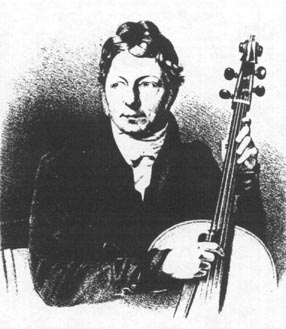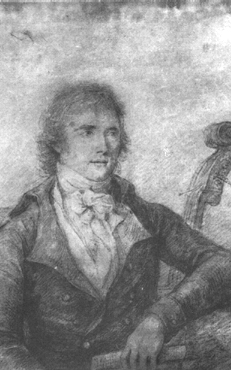|
Beethoven's |
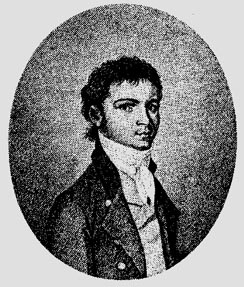 Ludwig van Beethoven (1800) |
After his successful stay in Prague, of which Beethoven already could report very favorably to his brother Nikolaus Johann in his letter of February 19, 1796, he continued his first long journey via Dresden and Leipzig to Berlin.
Thayer reports with respect to this that Beethoven, coming from Dresden, might have arrived in Leipzig at the beginning of May and soon thereafter in Berlin, where he he would stay until the beginning of July, and quotes Ferdinand Ries' report :
"He played several times at the court (that of King Frederick William II), where he played the two grand sonatas with obbligato violoncello, Op. 5, written for Duport, first violoncellist of the King, and himself. On his departure he received a gold snuff-box filled with Louis d'ors. Beethoven declared with pride that it was not an ordinary snuff-box, but such a one as it might have been customary to give to an ambassador " (Thayer: 184-185).
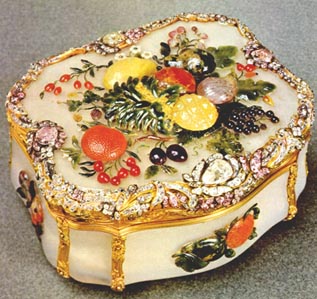 Snuff Box from the Collection of Frederick the Great of Prussia |
Of King Frederick William II, Thayer reports that he, not unlike his uncle, Frederick William the Great, was a patron and connoisseur of the arts, albeit, with a more refined taste, and that he played in quartets as a cellist.
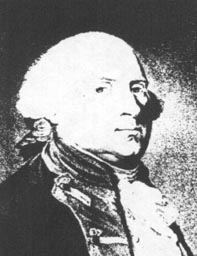 King Frederick William II of Prussia |
In his discussion, Thayer confirms Ries' report and also confirms 1796 as the year in which these Sonatas were written:
"There is no reason to question Ries' story that Beethoven composed them for Pierre Duport and played them with him. The dedication to Friedrich Whilhelm II and the character of the works lend credibility to Ries' account of their origin" (Thayer: 196).
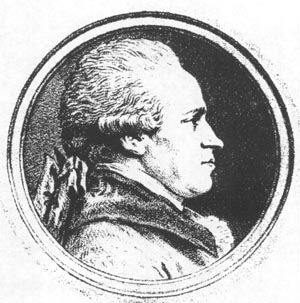 The Cellist Pierre Duport |
While there is little known with respect to Beethoven's whereabouts after his departure from Berlin in the first week of July until his fall journey to Pressburg and Pesth, this second journey has been documented by Beethoven's letter to Johann Andreas Streicher. However, since this letter does not concern itself with the works discussed here, we may take up our further investigations with Beethoven's return to Vienna in late 1796.
With respect to the further fate of these works,Thayer reports that the former Bonn court musicians and cousins, the violoncellist Bernahrd Romberg and the violinist Andreas Romberg, together with the Bonn painter Karl Kügelgen, arrived in Vienna from Rome in the late fall of 1796 and that, while Kügelgen immediately proceeded to Berlin, the Romberg cousins stayed with Beethoven in Vienna for a couple of weeks. Already a year before that, Baron Braun had seen them perform in Munich and had invited them to show their skills to Viennese audiences. However, since there, unfortunately, have not been preserved any advertisements of their Viennese concerts, we can thank Beethoven's friend Lenz von Breuning, who stayed in Vienna during this time, for having mentioned them in his letter of January 1797 to Franz Gerhard Wegeler:
The Cellist Bernhard Romberg
"Beethoven is here again; he played in the Romberg concert. He is the same as of old and I am glad that he and the Rombergs still get along with each other. Once he was near a break with them; I interceded and achieved my ends to a fair extent. Moreover, he thinks a great deal of me just now" (Thayer: 190).
Thayer subsequently confirms that Beethoven played the Cello Sonatas on the occasion of these concerts with Romberg, either still in late 1796 or in early 1797 (Thayer: 196).
The two Sonatas were advertised by Artaria in the Wiener Zeitung of February 8, 1797, and were published during the spring of this year.
However, Beethoven would not be Beethoven if there we could not report something further, not entirely un-hilarious with respect to these works: Thayer reports that In the spring of 1799, the greatest contrabassist in music history, Domenico Dragonetti, stayed in Vienna and also made Beethoven's acquaintance. As the letter later told Samuel Appleby from Brighton,
Domenico Dragonetti
"Beethoven had been told that his new friend could execute violoncello music upon his huge instrument, and one morning, when Dragonetti called at his room, he expressed his desire to hear a sonata. The contrabass was sent for, and the Sonata, No. 2, of Op. 5, was selected. Beethoven played his part, with his eyes immediately fixed upon his companion, and, in the finale, where the arpeggios occur, was so delighted and excited that at the close he sprang up and threw his arms around both player and instrument" (Thayer: 208:-).
While Thayer still points out that Beethoven, on the basis of Dragonetti's display of his skills, to the great dismay of all mediocre orchestral contrabassists, added many a difficulty for that instrument to his subsequent works, we can already look forward to a continuation of Beethoven's work in this compositional category, namely in the creation history of the Sonata for Pianoforte and Violoncello, Op. 69.
TO THE CREATION HISTORY OF OP. 69
